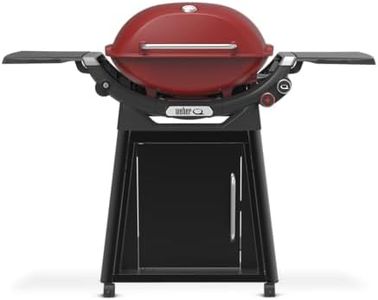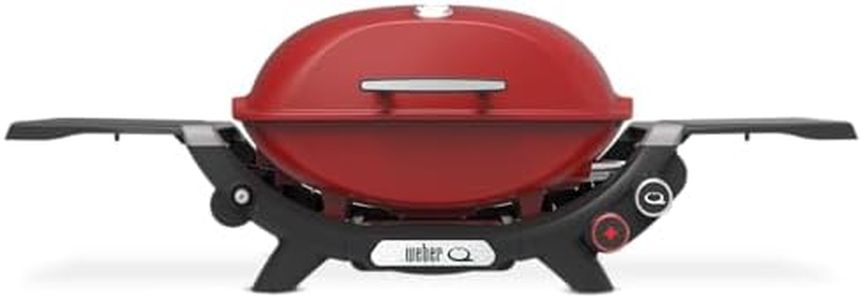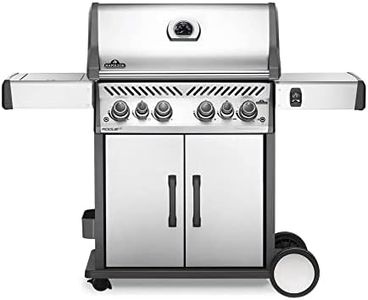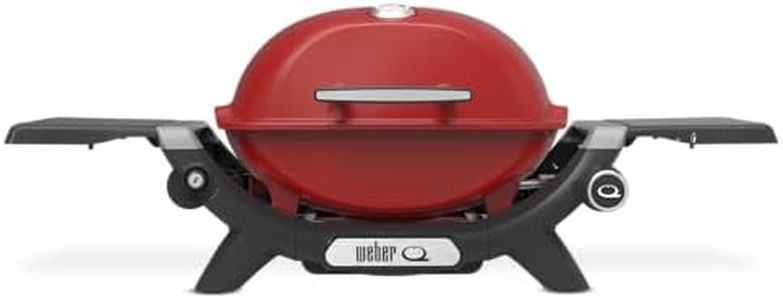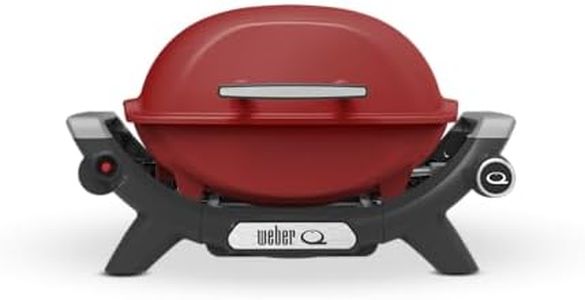We Use CookiesWe use cookies to enhance the security, performance,
functionality and for analytical and promotional activities. By continuing to browse this site you
are agreeing to our privacy policy
10 Best Cheap Gas Grills
From leading brands and best sellers available on the web.By clicking on a link to a third party's website, log data is shared with that third party.
Buying Guide for the Best Cheap Gas Grills
Choosing a gas grill can be exciting, especially when you’re hunting for great value. The main goal is to find a grill that fits your cooking style, space, and how many people you typically cook for. Think about whether you want a compact design for a balcony, enough burners to host a neighborhood BBQ, or easy cleaning features. By understanding the core specifications, you’ll be able to sift through the options and find a grill that will serve you well for many delicious seasons.Cooking AreaThe cooking area tells you how much space you’ll have for grilling, usually measured in square inches. This matters because it dictates how much food you can make at one time. Generally, grills range from small (about 200-300 sq in) for couples or small families, medium (300-500 sq in) for families and small gatherings, and large (over 500 sq in) for frequent entertainers. Pick a size that matches how many people you typically cook for; if you cook for just a few people, a smaller grill will be easier to manage and heat up quickly.
Number of BurnersBurners are the primary heat sources inside a gas grill. More burners mean you can divide your cooking area into zones for different heat levels, which is handy for cooking different foods at once. Small grills may have one or two burners; these are best for simple grilling and small batches. Three burners offer much more flexibility for everyday family grilling. Four or more burners are great for bigger gatherings or if you like advanced grilling techniques (like indirect heat cooking). Think about your cooking habits—if you mostly grill burgers and hot dogs, fewer burners may work; if you want to grill different dishes at the same time, aim for more.
BTU RatingBTU stands for British Thermal Unit and reflects how much heat the grill can produce. While a higher BTU can mean more heat, it’s not always better—a well-insulated, efficient grill can do more with less. For typical home use, BTUs usually range from about 10,000-40,000. Divide the BTU figure by cooking area to understand if the grill provides adequate heat for its size (generally 60-100 BTU per square inch is effective). If you love fast searing and frequent grilling, lean toward the higher end; if you cook slowly or infrequently, something lower is adequate.
Grate MaterialThe material of the grill grate affects heating and durability. Most common are porcelain-coated steel, stainless steel, and cast iron. Porcelain-coated steel is nonstick and easy to clean, but may chip over time. Stainless steel resists rust and is durable, but may allow food to stick if not treated. Cast iron grates hold heat well and leave classic grill marks, but need regular oiling to prevent rust. Choose porcelain-coated if you like low maintenance, stainless for longevity, or cast iron for heat retention and searing, matching your grilling style and willingness to maintain the grill.
Ignition SystemThe ignition system is how your grill starts; popular systems include push-button electronic and piezo ignition. Electronic ignitions (battery-powered) are very reliable and easy to use, while piezo systems use a mechanical spark which can wear out over time. Consider an electronic system if you want consistent quick starts, but either is fine if you don’t mind an occasional manual light with a match.
Build Quality and MaterialsThe overall build affects longevity and performance. Look for body and lid materials like stainless steel or coated steel that resist rust and withstand weather. Thicker gauge materials usually signal durability, while lightweight frames might be less sturdy. If you plan to keep your grill outdoors, pick tougher materials, but for covered storage or light use, less heavy-duty construction might suffice.
Portability and SizePortability is about how easily you can move the grill, determined by weight, wheel quality, and any folding features. Small grills are easier to move and work well on patios or balconies, while larger, stationary grills are best for permanent setups. If you want to grill at parks or campsites, look for portability; if it stays in one spot, stability and size may matter more.
Ease of CleaningCleaning features affect how much work you’ll do after grilling. Removable drip trays, grease catchers, and easy-access parts make a huge difference. More accessible grills are great for frequent use, as they keep you grilling longer and cleaning less. If cleanup is a chore for you, prioritize models with simple designs and easy-to-remove parts.
